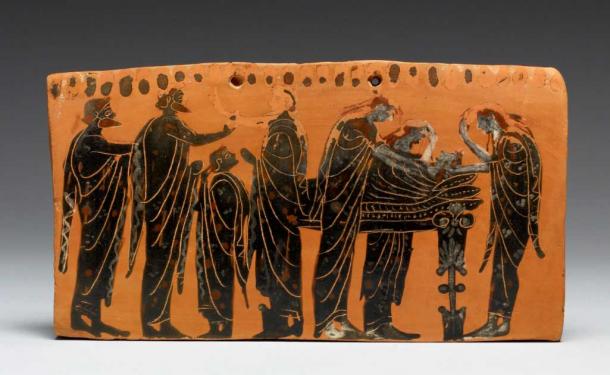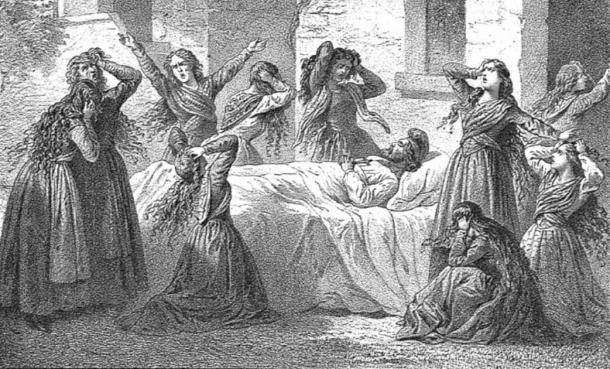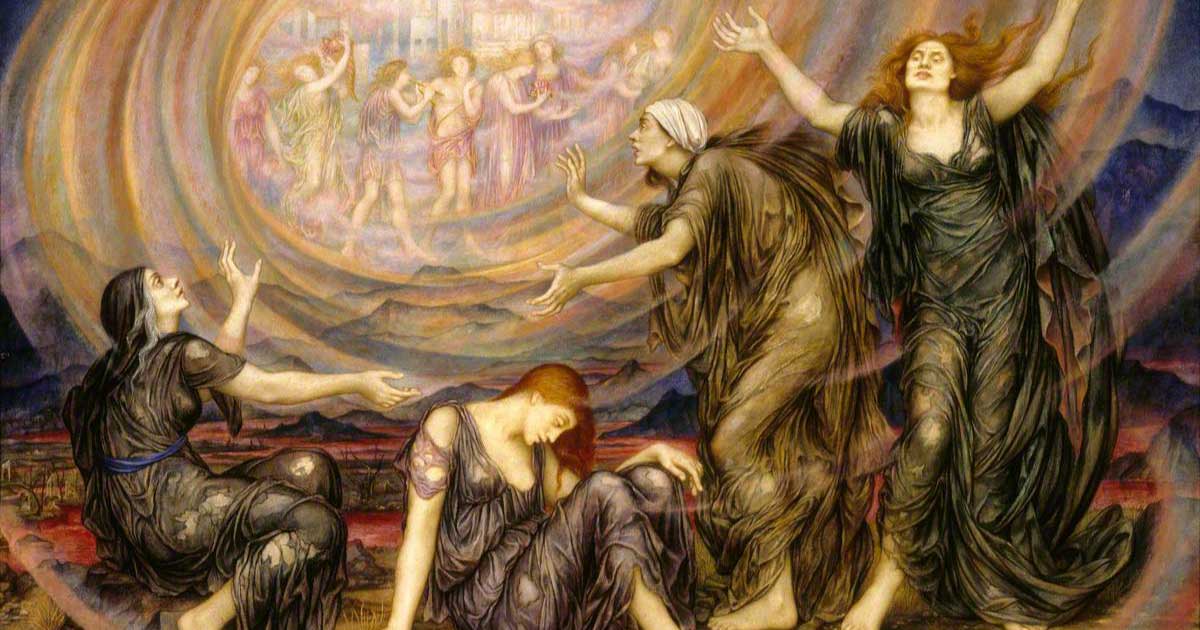The Cost of Grief: Professional Mourners of the Ancient World
Funerals can be difficult to get through. The pain of loss can simply be too much for many. So why would anyone ever need to pay people to cry at their funeral? This didn’t just happen occasionally in the ancient world. It was extremely common for wealthy people of the time to hire women to mourn at their funerals. Whether it was Rome, Greece, China, Egypt, or the Middle East, there are documented cases of professional mourners from all over the globe - and the reasons for it are fascinating.
Professional Mourning in Rome and Egypt
While there are examples of professional mourners from all over the globe, the best-documented case of professional mourning undoubtedly comes from Rome. Like most ancient cultures, the Roman funeral was a rite of passage that signified the transition of the deceased between the states of life and death. Roman funerals were marked by the noise that they generated. The wealthier and more famous the person, the flashier their procession would be, with mimes and musicians. Poorer people may have only had a few flute players.

Roman funerals varied based on economic class. Wealthier families paid for professional mourners and musicians, while the funerals of poorer families were smaller and quieter. (Carole Raddato / CC BY SA 2.0)
Professional mourners were a large part of these funeral processions. Much like in other parts of the ancient world, such as Egypt, these mourners were exclusively women. In Egypt, only childless women could become professional mourners. These women could not have any body hair and had the names of goddesses tattooed on their shoulders. The reason this was an exclusively female profession in Egypt was because it was considered improper for men to cry in public.
In fact, professional mourners were so important to the funeral rites in ancient Egypt that the rituals could not be complete without the presence of at least two mourners to play the roles of the goddesses Isis and Nephthys. These two women could not be related to the dead, and their role was to stand at opposite ends of the deceased’s body.
In Rome, the professional mourners weren’t present for religious purposes, but rather as displays of wealth and power. The mourners would wail loudly, rip out their hair, and scratch their faces in order to show the extent of their grief. The wealthier and more powerful the deceased, the more mourners would have been present at the funeral. Their displays would likely have been terrifying to our modern eyes, given the descriptions we have from ancient sources, but it was quite normal at the time. Much like in Egypt, however, men weren’t allowed to be professional mourners since it was improper for them to cry in public.

Professional mourners from ancient Egypt painted on the tomb of Ramose, circa 1411-1375 BCE (Public Domain)
Professional Mourning in the Bible
There are even examples of professional mourners in the Bible, for example in the Book of Amos:
"Therefore thus says the LORD God of hosts, the Lord, "There is wailing in all the plazas, And in all the streets they say, 'Alas! Alas!' They also call the farmer to mourning. And professional mourners to lamentation" (Amos 5:16).
And in the Book of Jeremiah:
“Thus said the LORD of hosts, Consider you, and call for the mourning women, that they may come; and send for cunning women, that they may come” (Jeremiah 9:17).
It seems that the professional mourners mentioned in the Christian Bible are closer to the Roman version than the Egyptian version. In the numerous references found throughout the Bible, the mourners are certainly not described as somber and reserved, quite the opposite in fact. It seems these mourners caused quite a commotion. Once again, the mourners were almost exclusively women and were commonly referred to in the Bible as ‘wailing women,’ in reference to their loud screams.

Professional mourners were typically women, as it was considered unacceptable for men to cry. ‘Dolente’, sculpture by Guido Mazzoni, circa 1480-1485 (Nicola Quirico / CC BY SA 4.0)
Professional Mourning in Ancient Greece
In Greece, meanwhile, the ancient practice of professional mourning still lives on to this day. Here, the origins of the tradition go all the way back to at least the 8th century BC. This funeral ritual started with family and friends of the deceased improvising laments during the prothesis, which was when the body was left out for public viewing on the second day. Interestingly, a terracotta plaque by the Gela Painter depicts a prothesis in which the deceased is on a bed surrounded by family members, some of whom are tearing their hair out. It is possible that this is where the Roman mourners drew their inspiration. Those Romans did love to copy the Greeks after all.

This black-figure example shows a prothesis scene, the lying-in-state of the deceased on a bed, surrounded by mourners, second half 6th century BC (Public Domain)
The practice of professional mourning still exists in Greece today. Its practitioners are known as moirologists, and they conduct themselves similarly to their ancestors. They are still exclusively women and they still lead the lamentations as family and friends surround the deceased in mourning. They even still pull on their hair although they aren’t quite crazy enough to pull it out as the ancient Greeks did. They do, however, make offerings to the dead, as was the tradition in ancient times. This usually includes locks of hair, perfume, oil, wine, honey and garlands. They would continue to make offerings regularly after the funeral, particularly on anniversaries.

Some professional mourners created quite a spectacle, including pulling out their hair as they wailed. Drawing circa 1863 (Public Domain)
It seems as though the Greek tradition of professional mourners was at least somewhat similar to the Roman tradition. Very few sources reference professional mourners in Greece, so it is hard to say for certain, but it seems like these mourners were hired mainly as a display of wealth and power. This is supported by the fact that during the Greek Archaic Period, simpler burial practices coincided with the rise of democracy. However, during the 4th century BC, the decline of democracy and the return of aristocratic dominance meant the return of more elaborate and luxurious funerals for these aristocrats.
Top image: The hiring of professional mourners seems to have been a worldwide tradition in the ancient world, from Rome to Egypt to China. The Mourners, painting by Evelyn De Morgan, circa 1915. Source: National Trust / Public Domain
By Mark Brophy
References
Fife, S. January 18, 2012. The Roman Funeral. World History Encyclopedia. Available at: https://www.worldhistory.org/article/96/the-roman-funeral/.
Harrsch, M. May 11, 2021. Professional mourners in the ancient world. Roman Times. Available at: https://ancientimes.blogspot.com/2021/05/professional-mourners-in-ancient-world.html
Kalonaros, R. February 14, 2018. The Professional Mourners of Mani, Greece. Atlas Obscura. Available at: https://www.atlasobscura.com/articles/moirologists-mourners-mani-greece-death
Mourning: Hired Mourners. n.d. Bible Hub. Available at: https://biblehub.com/topical/naves/m/mourning--hired_mourners.htm
Tyrrell, E. October 25, 2021. Professional Mourners were the Life of Ancient Funerals. Available at: https://www.cracked.com/article_31612_professional-mourners-were-the-life-of-ancient-funerals.html

















